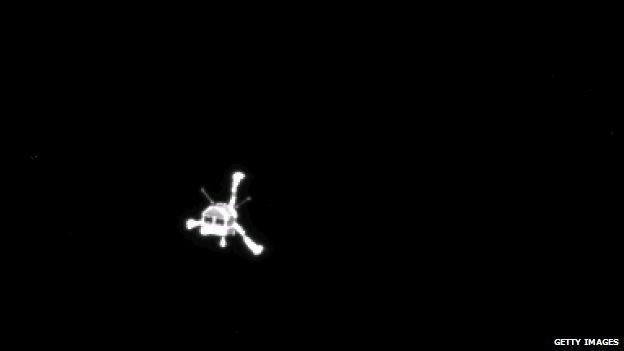Philae probe had bumpy landing on comet's surface
- Published

There are concerns about whether the battery on the first space probe to ever land on a comet can last.
The Philae probe is almost a mile away from where scientists had hoped it would position itself after bouncing off the surface of comet 67P and flying a kilometre out into space during a rough landing.
European Space Agency experts say it has stabilised and is sending pictures back but it's in the shadow of a cliff, meaning its solar powered battery may struggle to recharge itself.
The battery has around 30 hours left on it at the moment and scientists are desperately looking into ways to prolong the battery life.
The Philae landing has been described as the most exciting space development since man first went to the moon so every effort is being made to keep the probe going.
Historic
The robot probe, the size of a washing machine, was launched from a satellite on Wednesday and spent seven hours travelling to the comet.
See this amazing reaction to the probe's landing.
The landing didn't go quite according to plan as special harpoons designed to keep it attached didn't fire, meaning the probe left the surface twice before touching down again.
It was a nervous few hours for the team, who've been working on this project for 25 years, as they waited for a signal from the spacecraft but communication has now been re-established.
Mission
Scientists are hoping the probe will analyse the comet's surface to yield insights into the origins of our Solar System more than 4.5 billion years ago.
It has already sent back pictures of the craggy, grey landscape.
Click on here to find out more about the The history of the Rosetta mission.
